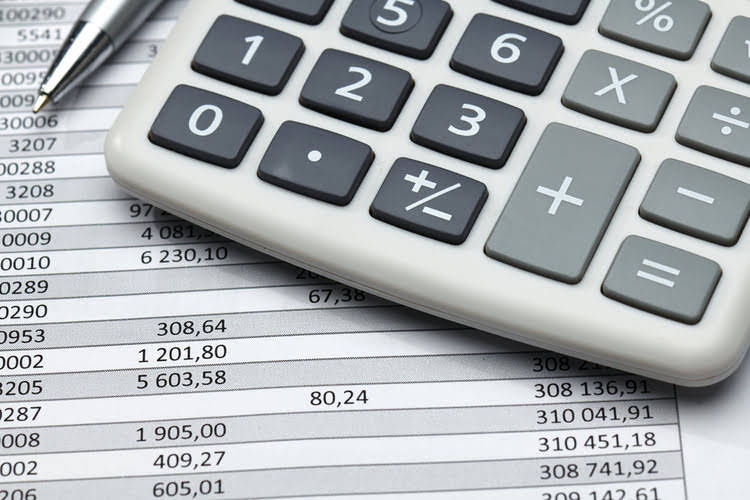If, for example, increasing production from 200 to 201 units per day requires a small business to purchase additional equipment, then the marginal cost of production may be very high. In contrast, this expense might be significantly lower if the business is considering an increase from 150 to 151 units using existing equipment. Variable costs are things that can change over time, such as costs for labor and raw materials. Such externalities are a result of firms externalizing their costs onto a third party in order to reduce their own total cost.
- Marginal cost is the change in cost caused by the additional input required to produce the next unit.
- Each curve initially increases at a decreasing rate, reaches an inflection point, then increases at an increasing rate.
- Beyond that point, the cost of producing an additional unit will exceed the revenue generated.
- On the short run, the firm has some costs that are fixed independently of the quantity of output (e.g. buildings, machinery).
Marginal Cost Curve
- This means that the marginal cost of each additional unit produced is $25.
- Total production costs include all the expenses of producing products at current levels.
- The increased production will yield 25 total units, so the change in the quantity of units produced is one ( ).
- Other costs are considered fixed costs, whereas practically, there is inflation, which affects the cost in the long run and may increase in the future.
Mathematically, it is expressed as a derivative of the total cost concerning quantity. This is not true for firms operating in other market structures. For example, while a monopoly has an MC curve, it does not have a supply curve. In a perfectly competitive market, a supply curve shows how to get marginal cost the quantity a seller is willing and able to supply at each price – for each price, there is a unique quantity that would be supplied. For discrete calculation without calculus, marginal cost equals the change in total (or variable) cost that comes with each additional unit produced.
How to Find Total Cost from Marginal Cost?

Imagine a company that has reached its maximum limit of production volume. If it wants to produce more units, the marginal cost would be very high as major investments would be required to expand the factory’s capacity or lease space from another factory at a high cost. Marginal cost represents the incremental costs incurred when producing additional units of a good or service. It is calculated by taking the total change in the cost of producing more goods and dividing that by the change in the number of goods produced. During the manufacturing process, a company may become more or less efficient as additional units are produced.

How to Find Variable Cost from Marginal Cost?
Since they only have one dining room, they wouldn’t need or want to purchase a second table for $100. They might, however, be enticed to purchase a second table for $50, since there is an incredible value at that price. Therefore, the marginal benefit to the consumer decreases from $100 to $50 with the additional unit of the dining room table.
Economies of Scale (or Not)
- For a business with economies of scale, producing each additional unit becomes cheaper, and the company is incentivized to reach the point where marginal revenue equals marginal cost.
- AVC is the Average Variable Cost, AFC the Average Fixed Cost, and MC the marginal cost curve crossing the minimum of both the Average Variable Cost curve and the Average Cost curve.
- Consider the warehouse for a manufacturer of landscaping equipment.
- However, the general patterns of these curves, and the relationships and economic intuition behind them, will not change.
- Marginal cost is an important factor in economic theory because a company that is looking to maximize its profits will produce up to the point where marginal cost (MC) equals marginal revenue (MR).
- It also includes information asymmetries, the presence of externalities, transaction costs, etc.
Then it shows a decline as with the same fixed cost, many units are produced, keeping the cost of production low. After it reaches the minimum level or point, it again starts rising to show a rise in the cost of production. It is because of the exhaustion of resources or the overuse of resources. The marginal cost curve is given below for your better understanding.

What is the Marginal Cost Formula?

Marginal cost is calculated by dividing the change in costs by the change in quantity. For example, suppose that a factory is currently producing 5,000 units and wishes to increase its production to 10,000 units. If the factory’s current cost of production is $100,000, and if increasing its production level would raise its costs to $150,000, then the marginal cost of production https://www.bookstime.com/ is $10, or ($150,000 – $100,000) ÷ (10, ,000). The definition of marginal cost states that it is the cost borne by the company to produce an additional unit of output. In other words, it is the change in the total production cost with the change in the quantity produced. Marginal cost is the change in the total cost of production by producing one additional unit of output.
A good example is if demand for running shoes for a footwear company increases more machinery may be needed to expand production and is a one-off expense. However, it does need to be accounted for at the point the purchase takes place. Usually, marginal costs include all costs that vary with increases in production.
How to get the marginal cost of a business?

However, adding increasingly more water brings smaller increases in output, until at some point the water floods the field and actually reduces output. Diminishing marginal productivity occurs because, with fixed inputs (land in this example), each additional unit of input (e.g., water) contributes less to overall production. Marginal cost is the change in the total cost of production upon a change in output that is the change in the quantity of production. In short, the change in total cost arises when the quantity produced changes by one unit.
